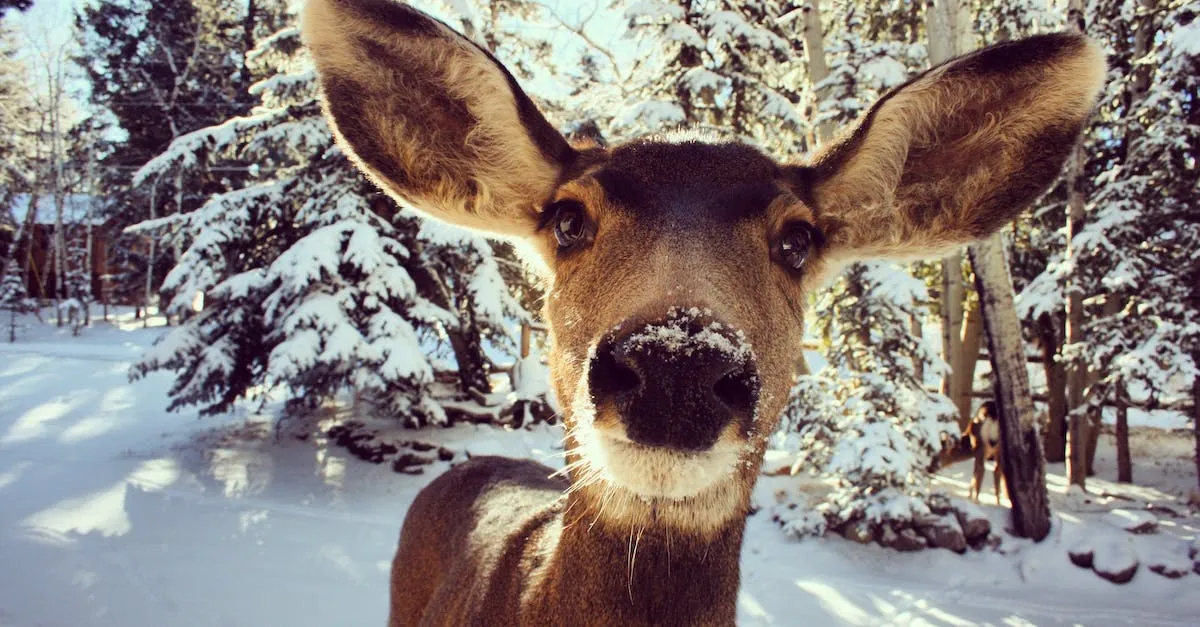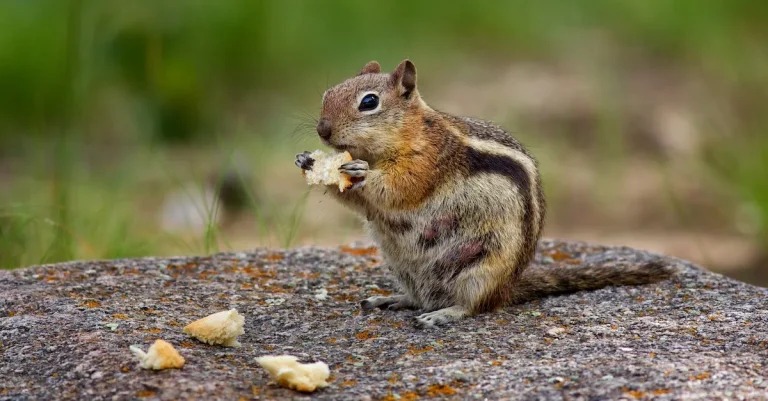What Is The State Animal Of Colorado?
Colorado’s diverse landscapes are home to a variety of wildlife species. If you’ve ever wondered which animal was chosen to represent the Centennial State, you’ve come to the right place.
If you’re short on time, here’s a quick answer to your question: The Rocky Mountain Bighorn Sheep is the official state animal of Colorado.
In this in-depth article, we’ll cover everything you need to know about Colorado’s state animal. We’ll explore the history behind how the bighorn sheep came to represent Colorado, details about the species itself, and where you can spot these iconic animals in their natural habitat within the state. Read on to learn more about this regal state symbol of the Rocky Mountains!
History and Origins: How the Bighorn Sheep Became Colorado’s State Animal
The Bighorn Sheep is the official state animal of Colorado, and its selection holds a rich history and cultural significance. This majestic creature became the symbol of the state due to its deep roots in Colorado’s native species, cultural heritage, and conservation efforts.
Native Species of Colorado
The Bighorn Sheep, scientifically known as Ovis canadensis, is native to the Rocky Mountains and can be found in various regions of Colorado. These iconic animals are well-adapted to the rugged terrain of the state, with their impressive climbing abilities and distinctive curved horns.
Their presence in Colorado’s wilderness is a testament to the state’s diverse and unique ecosystem.
Bighorn Sheep populations have faced challenges over the years due to factors such as habitat loss, disease, and competition with other species. However, thanks to ongoing conservation efforts, their numbers have been steadily rising, ensuring their continued presence in Colorado’s wildlife.
Cultural Significance to Indigenous Tribes
The Bighorn Sheep holds deep cultural significance to the indigenous tribes of Colorado, including the Ute, Cheyenne, and Arapaho tribes. These tribes have long regarded the Bighorn Sheep as a symbol of strength, resilience, and spirituality.
The sheep’s ability to navigate treacherous mountainous terrain has served as an inspiration to many indigenous communities, who have incorporated its imagery in their traditional art, stories, and ceremonies.
For centuries, indigenous tribes have relied on the Bighorn Sheep for sustenance, utilizing their meat, hides, and bones for various purposes. The relationship between these tribes and the Bighorn Sheep is a testament to the deep connection between nature and culture, highlighting the importance of preserving these magnificent creatures.
Conservation Efforts and Preservation
Recognizing the significance of the Bighorn Sheep, Colorado has implemented various conservation efforts to protect and preserve this iconic species. State and federal agencies, along with conservation organizations, have worked tirelessly to restore and expand Bighorn Sheep populations throughout the state.
These efforts include habitat restoration, disease management, and monitoring of population numbers. Additionally, hunting regulations have been put in place to ensure sustainable hunting practices that maintain healthy populations while allowing for limited hunting opportunities.
The success of these conservation efforts is evident in the increasing number of Bighorn Sheep sightings across Colorado. The preservation of these magnificent creatures is not only a testament to Colorado’s commitment to protecting its native species but also a reminder of the importance of maintaining biodiversity and preserving our natural heritage.
For more information about Bighorn Sheep and their conservation efforts in Colorado, you can visit the Colorado Parks and Wildlife website.
All About the Rocky Mountain Bighorn Sheep
Physical Characteristics
The Rocky Mountain Bighorn Sheep is the state animal of Colorado. These magnificent creatures are known for their impressive physical characteristics. Adult males, also known as rams, can weigh up to 300 pounds and have large, curved horns that can reach lengths of up to 30 inches.
The horns are composed of keratin, the same material found in human fingernails, and they continue to grow throughout the ram’s life. The female bighorn sheep, known as ewes, are smaller in size and have shorter, less curved horns.
Their fur is typically a light brown color, which helps them blend in with their rocky surroundings.
Habitat and Range
The Rocky Mountain Bighorn Sheep is native to the mountainous regions of North America, including the Rocky Mountains in Colorado. They are well adapted to life in rugged terrain, where they can navigate steep slopes and rocky cliffs with ease.
These sheep prefer high-altitude habitats, often found at elevations of 8,000 to 14,000 feet. They have excellent eyesight, allowing them to spot predators from afar and quickly escape to higher ground.
Bighorn sheep are social animals and can be found in herds ranging from a few individuals to over 100.
Diet and Behavior
Bighorn sheep are herbivores, primarily feeding on grasses, sedges, and other plant materials. They have specialized digestive systems that allow them to efficiently extract nutrients from their food. These sheep are highly adaptable and can survive in areas with limited vegetation.
During the winter months, when food is scarce, they will dig through snow to reach grasses and other plants buried beneath the surface.
Bighorn sheep are known for their impressive climbing abilities. They can scale steep slopes and navigate narrow ledges with ease. Their hooves have a rubbery texture, providing them with excellent traction on rocky surfaces.
Male bighorn sheep engage in a behavior known as “rutting,” where they compete for dominance by ramming their horns together. This behavior helps establish a hierarchy within the herd and determines which males have access to females during the mating season.
For more information about the Rocky Mountain Bighorn Sheep, you can visit the Colorado Parks and Wildlife website.
Where to See Bighorn Sheep in Colorado
Colorado is home to a diverse range of wildlife, and one of its most iconic animals is the bighorn sheep. These magnificent creatures can be found in various parts of the state, offering visitors a chance to witness their beauty and grace in person.
If you’re interested in seeing bighorn sheep up close, here are some of the best places to visit in Colorado:
Rocky Mountain National Park
Rocky Mountain National Park is a haven for wildlife enthusiasts, and it’s no surprise that it’s a great place to spot bighorn sheep. The park is home to a large population of these majestic animals, and visitors can often see them grazing on the lush alpine meadows or scaling the steep mountain slopes.
The best time to see bighorn sheep in Rocky Mountain National Park is during the early morning or late evening hours when they are most active.
Mount Evans Wilderness Area
The Mount Evans Wilderness Area is another fantastic location to observe bighorn sheep in their natural habitat. Located just a short drive from Denver, this wilderness area offers stunning mountain views and ample opportunities for wildlife viewing.
Bighorn sheep can often be seen along the scenic hiking trails or on the rocky cliffs of Mount Evans. Keep your camera ready, as you might just capture a memorable shot of these incredible animals.
Maroon Bells-Snowmass Wilderness
The Maroon Bells-Snowmass Wilderness, located near Aspen, is not only known for its breathtaking scenery but also for its abundant wildlife. Bighorn sheep are among the many species that call this wilderness area home.
Hikers and nature enthusiasts can explore the numerous trails that wind through the picturesque valleys and forests, providing excellent chances to encounter bighorn sheep in their natural habitat.
San Juan Mountains
The rugged and remote San Juan Mountains in southwestern Colorado offer a unique opportunity to see bighorn sheep in a truly wild setting. These mountains are home to some of the largest populations of bighorn sheep in the state.
Whether you’re hiking through the high alpine terrain or driving along the scenic mountain roads, keep an eye out for these magnificent creatures. With a little bit of luck, you might even witness an exciting encounter between two rams competing for dominance.
Remember, when observing bighorn sheep, it’s important to maintain a safe distance and not disturb or approach them. Enjoy their presence from a distance and respect their natural habitat. For more information about bighorn sheep and where to see them in Colorado, visit the Colorado Parks and Wildlife website.
Conclusion
The majestic Rocky Mountain bighorn sheep is a fitting symbol for the state of Colorado. As an iconic species of the region, native to the rugged alpine habitat, bighorns represent the pioneer spirit and wilderness heritage of the state. Learning about the natural history of the bighorn sheep gives us a greater appreciation for Colorado’s diverse ecosystems and wildlife.
Whether you hope to glimpse one in the wild or want to know more about this regal state symbol, this guide covers everything you need to know about the Rocky Mountain bighorn sheep of Colorado. Understanding state symbols creates a stronger connection to the local culture and environment. The bighorn sheep is a testament to the resilience and adaptability of native species that call the Rocky Mountains home.








